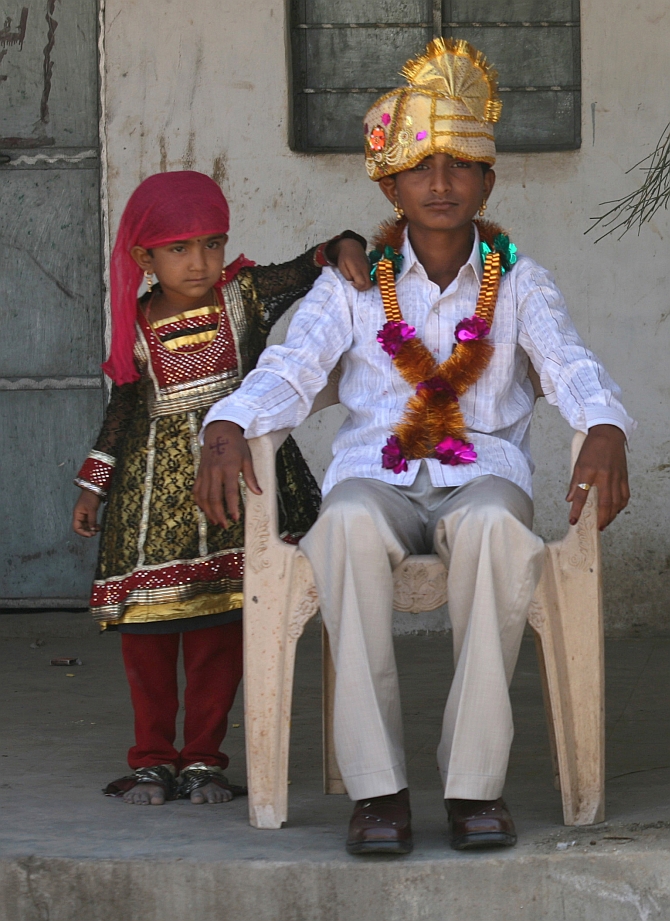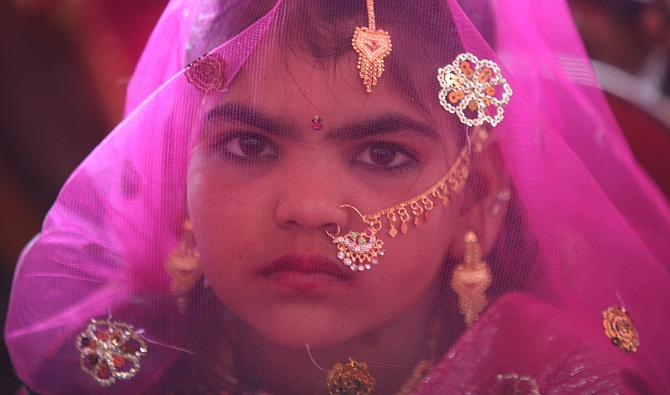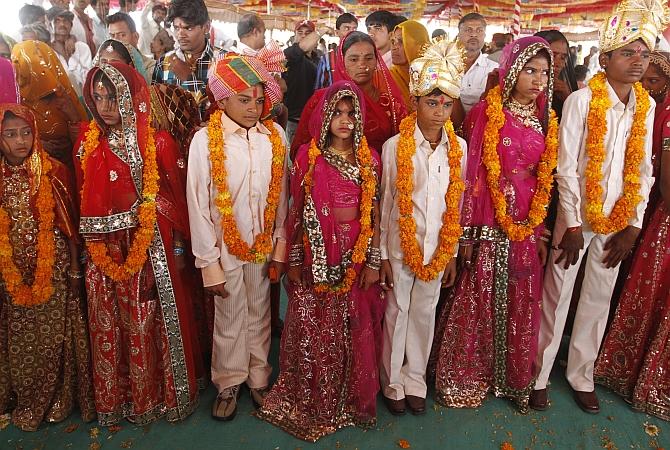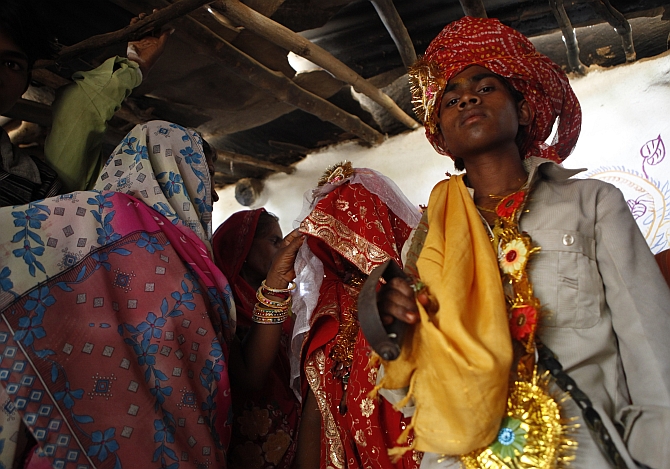
India has the sixth highest prevalence of child marriage in the world with one in every three child bride living in India, a United Nations report said.
Child marriage among girls is most common in South Asia and sub-Saharan Africa and India is among the top 10 countries with the highest rates of child marriage, UNICEF said in a report titled "Ending Child Marriage -- Progress and prospects."
"South Asia is home to almost half (42 per cent) of all child brides worldwide; India alone accounts for one third of the global total," the report said.
…

Worldwide, more than 700 million women alive today were married as children or before their 18th birthday. More than one in three -- about 250 million -- entered into union before age 15, the report said.
The 10 countries with the highest rates of child marriage are Niger, Bangladesh, Chad, Mali, Central African Republic, India, Guinea, Ethiopia, Burkina Faso and Nepal respectively.
…

In India, about 27 per cent of women aged 20 to 49 years were married before age 15. About 31 per cent of women in that age group were married after age 15 but before they turned 18.
The report added that in India, the median age at first marriage is 19.
Seven years for women in the richest quintile compared to 15.4 for the poorest women.
In the Dominican Republic and India, the wealthiest women marry about four years later than the poorest women.
…

UNICEF said that Female Genital Mutilation and child marriage are the two practices that affect millions of girls across the globe. It said while prevalence has decreased slightly over the past three decades, rates of progress need to be scaled up dramatically to offset population growth in the countries where the practices are most common.
"Female genital mutilation and child marriage profoundly and permanently harm girls, denying them their right to make their own decisions and to reach their full potential."
"They are detriments to the girls themselves, their families, and their societies," UNICEF Executive Director Anthony Lake said.
"Girls are not property; they have the right to determine their destiny. When they do so, everyone benefits."
…

According to the newly-released data, child marriage is widespread and can lead to a lifetime of disadvantage and deprivation.
"Girls who marry before they turn 18 are less likely to remain in school and more likely to experience domestic violence. Young teenage girls are more likely to die due to complications in pregnancy and childbirth than women in their 20s; their infants are more likely to be stillborn or die in the first month of life," it said.
The report further added that more than 130 million girls and women have experienced some form of FGM in the 29 countries in Africa and the Middle East where the harmful practice is most common.
Apart from extreme physical and psychological pain, girls who undergo FGM are at risk of prolonged bleeding, infection, infertility and death.
Kenya and Tanzania have seen rates of FGM drop to a third of their levels three decades ago through a combination of community activism and legislation.
In the Central African Republic, Iraq, Liberia and Nigeria, prevalence has dropped by as much as half.
…

According to the newly-released data, child marriage is widespread and can lead to a lifetime of disadvantage and deprivation.
"Girls who marry before they turn 18 are less likely to remain in school and more likely to experience domestic violence. Young teenage girls are more likely to die due to complications in pregnancy and childbirth than women in their 20s; their infants are more likely to be stillborn or die in the first month of life," it said.
The report further added that more than 130 million girls and women have experienced some form of FGM in the 29 countries in Africa and the Middle East where the harmful practice is most common.
Apart from extreme physical and psychological pain, girls who undergo FGM are at risk of prolonged bleeding, infection, infertility and death.
Kenya and Tanzania have seen rates of FGM drop to a third of their levels three decades ago through a combination of community activism and legislation.
In the Central African Republic, Iraq, Liberia and Nigeria, prevalence has dropped by as much as half.
"Attitudes are also changing: recent data show that the majority of people in the countries where FGM is practiced believe it should end, but continue to compel their daughters to undergo the procedure because of strong social pressure," it said.
"But without far more intensive and sustained action now from all parts of society, hundreds of millions more girls will suffer profound, permanent, and utterly unnecessary harm," it added.
The report said if rates of decline seen in the past three decades are sustained, the impact of population growth means the number of women married as children (more than 700 million) will remain flat through 2050.
"The numbers tell us we must accelerate our efforts. And let's not forget that these numbers represent real lives.
While these are problems of a global scale, the solutions must be local, driven by communities, families and girls themselves to change mindsets and break the cycles that perpetuate FGM and child marriage," Lake said.
"We can't let the staggering numbers numb us -- they must compel us to act."